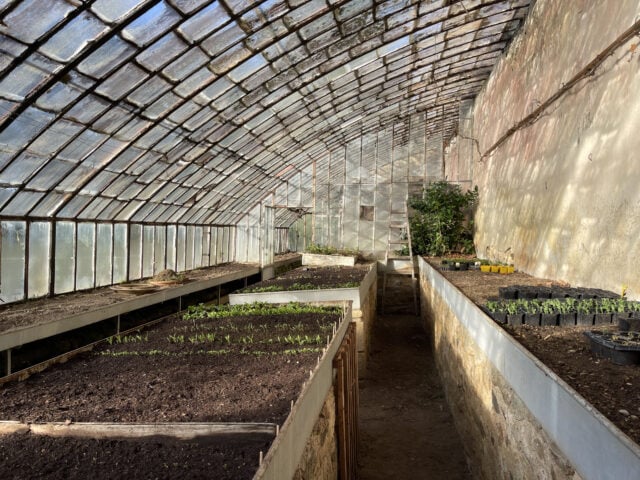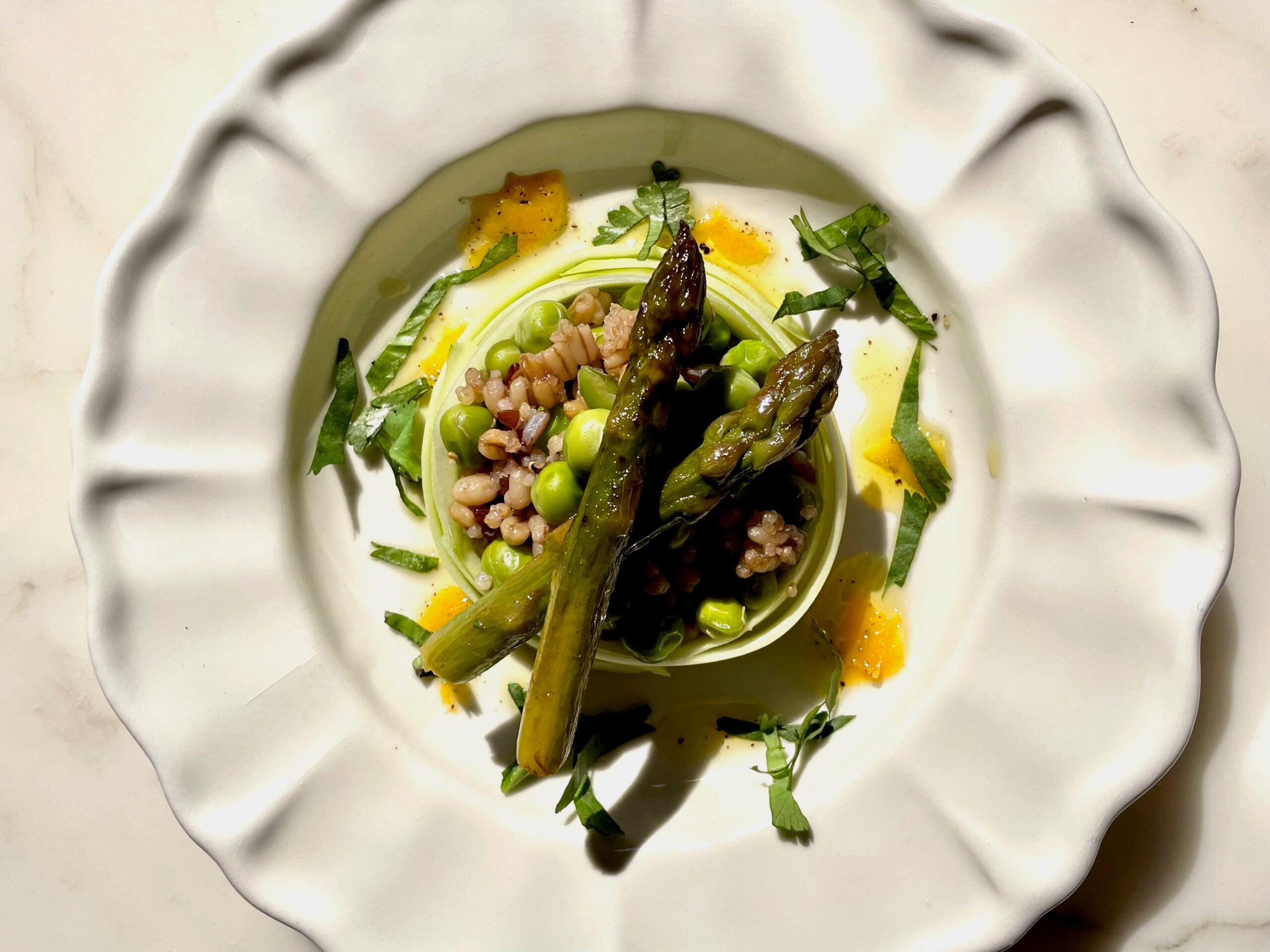
The historic greenhouse of the TiL estate
In French a greenhouse ia called a "serre" and the word comes from tighten , that is to say “to shelter” .
The first attempts at greenhouses were born in Roman times, to cultivate plants under cover (the cucumbers prized by the Emperor Tiberius). It was during the Renaissance that glass panes were used to build greenhouses. During this great exploratory period, exotic plants brought from distant lands and which had to be kept warm, and botanical gardens, flourished.
At the very beginning of the 18th century, the first very large glass greenhouse was created, to ensure the growth of a coffee plant offered to Louis XIV.

Real greenhouses with completely glazed roofs and walls appeared in the 19th century; they were initially reserved for the very wealthy, then developed, while taxes on glass were abolished and curved glass and galvanized steel arrived. Any estate worthy of the name then has its greenhouse, intended for the cultivation of exotic plants and fruits for the table, flowers to decorate homes with imposing fresh bouquets all year round, and various vegetables.
In the TiL area, the greenhouse has been there for more than 150 years , erecting its glass walls and ceilings in the immense vegetable garden.
This magnificent 19th century greenhouse is a rare vestige, as there are few such well-designed and preserved examples remaining in a private domain.
Leaning against the old stone wall enclosing the vegetable garden, oriented as the Ancients knew how to do so well to make the most of the sun's rays, it was intended both to feed the numerous inhabitants of the estate, owners and staff, and to cultivate crops. decorative flowers and plants.
It ensured food self-sufficiency by operating all year round: in winter, its heating system, a gigantic pipe, always present, passing under the bins and supplied by an external chimney, ensured a sufficiently mild temperature, and in summer its ingenious mechanism, rolling down straw curtains from the roof onto the glass panes, preserved a beneficial freshness despite the extreme heat.
Vines, orange trees and all possible fruits and vegetables grew there, some of which were then replanted in the open ground in the vegetable garden.

Today, it is still in use, of course bearing the marks of time, but we cherish it and try to give it a new lease of life. It still constitutes a piece of life and Nature, which defies climatic hazards . A bubble out of time.
Inside, there is a fresh atmosphere when it is very cold and tropical when the sun is burning, but there is always a feeling of peace and serenity, and the reassuring impression of a return to basics.
Bathed in light , the orange tree blossoms there, the old vine lines up its trellises of delicious white grapes, and the small green and tender leaves of the seedlings line up in the immense bins. So many promises of salads, radishes, spinach, coriander, fennel, basil, green beans, peas, broad beans, sorrel, zucchini, squash, eggplant...
Last year's hydrangea cuttings are starting to green up and form tiny flowers, marigolds, poppies, sunflowers, flax, cosmos are putting out their first leaves.

In the vegetable garden, carrots, leeks, potatoes were planted on previously mulched soil to encourage organic matter (the sign of good soil is the number of earthworms, and in our area, it's teeming with people!). earth, onions, garlic... which come alongside aromatic herbs, thyme, bay leaf, sage, rosemary, chives, artichokes, raspberries, strawberries, blackcurrants, gooseberries...

In the vegetable garden, carrots, leeks, potatoes were planted on previously mulched soil to encourage organic matter (the sign of good soil is the number of earthworms, and in our area, it's teeming with people!). earth, onions, garlic... which come alongside aromatic herbs, thyme, bay leaf, sage, rosemary, chives, artichokes, raspberries, strawberries, blackcurrants, gooseberries...
Dozens and dozens of rose bushes have been pruned, others planted, the wisteria opens its purple clusters, the peonies, arums and rhododendrons prepare their flowers, as do the lilacs. In the orchard, next to the sheep's pastures, pear trees, cherry trees, apple trees, peach trees began to explode with flowers...
It is the daily life of Nature, an immutable enchantment of life that begins again and always the impression of true magic when a tiny buried seed becomes a magnificent plant or vegetable, with a flavor like no other!

